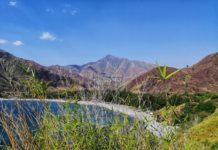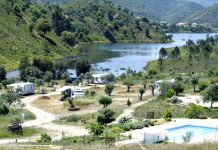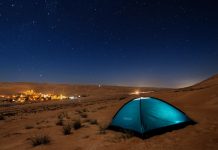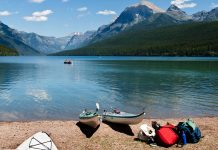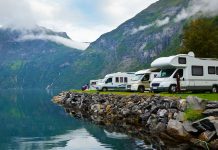One of America’s most least-known but beautiful islands lies in the Atlantic Ocean just off the coast of Georgia and is known as Cumberland Island. It’s filled with natural ecosystems, excellent beaches, backcountry trails, amazing wildlife and numerous locations for hiking and primitive camping adventures.
The island is known as the southernmost and biggest of the barrier islands and also offers plenty of opportunities for biking, swimming, boating, and bird watching.
(photo credit:Â dougandme)
When it comes to wildlife, this remote island is home to a wide assortment of interesting creatures, such as deer, sea turtles, migratory fowl, alligators, and beautiful wild horses. There are several more barrier islands in the area, but Cumberland Island stands out due to its green forests, tidal creeks, mudflats, and unspoiled marshes and beaches.
You can reach the island by ferry from the historic and charming Georgia town of St. Mary’s. It runs two times a day throughout the peak summer season and sails down the St. Mary’s River before crossing the scenic Cumberland Sound. Travelers are loaded onshore in the southern area of the island at the Sea Camp boat dock. It’s in this part of the island where you’ll find a couple of the island’s developed campgrounds. These are the Stafford campground and the Sea Camp Campground.
It doesn’t matter if you prefer backcountry primitive camping or a supervised ground; you can camp out on the island at any time of the year. However, there’s a time limit of seven days for campers. There are 16 individual sites at the Sea Camp Campground as well as two group sites. You’ll find showers here as well as a picnic table, fire ring, grill, and food cage on each of the sites. There’s also a boardwalk that takes you down to the nearest beach. Stafford Campground offers restrooms, fire rings, and showers.
If you’d rather camp out in the wilderness, you’ll find plenty of suitable areas in the forests, wetlands and marshes. You won’t be able to start a campfire in the backcountry though, so it’s recommended that you take a portable stove along with you. You should also treat the water before drinking it and make sure that you pack out all of your garbage. Basically, you just need to make sure you leave the area the same way you found it.
One of the most popular areas for primitive camping is Hickory Hills, which in the heart of Cumberland Island. It’s surrounded by the fabulous marshes, wetlands and animal life. If you head to this area be sure to take along adequate protection from insects as they’re attracted to the damp regions and marshes.
Other popular spots on the island include Yankee Paradise, and the Plum Orchard Mansion. These are located about eight miles from the developed campgrounds. If you’d like to catch a glimpse of some manatees and playful dolphins you can take a hike over to Brickhill Bluff, which sits next to the Brickhill River and is another ideal area for camping.
The island offers plenty to see and do for visitors of all ages. This includes just relaxing and taking it easy while gazing at the stars or watching the local birds to hiking, fishing, and swimming. In addition Cumberland Island is home to four major historical districts and more than 80 historic places listed by the National Register of Historic Places. The island’s about 17.5 miles long and 56 square miles in total size.
There aren’t any paved roads on the island, but you can rent bikes at the Sea Camp Dock. Be aware that you can’t take bikes on the ferry, but you can if arriving by private boat.

